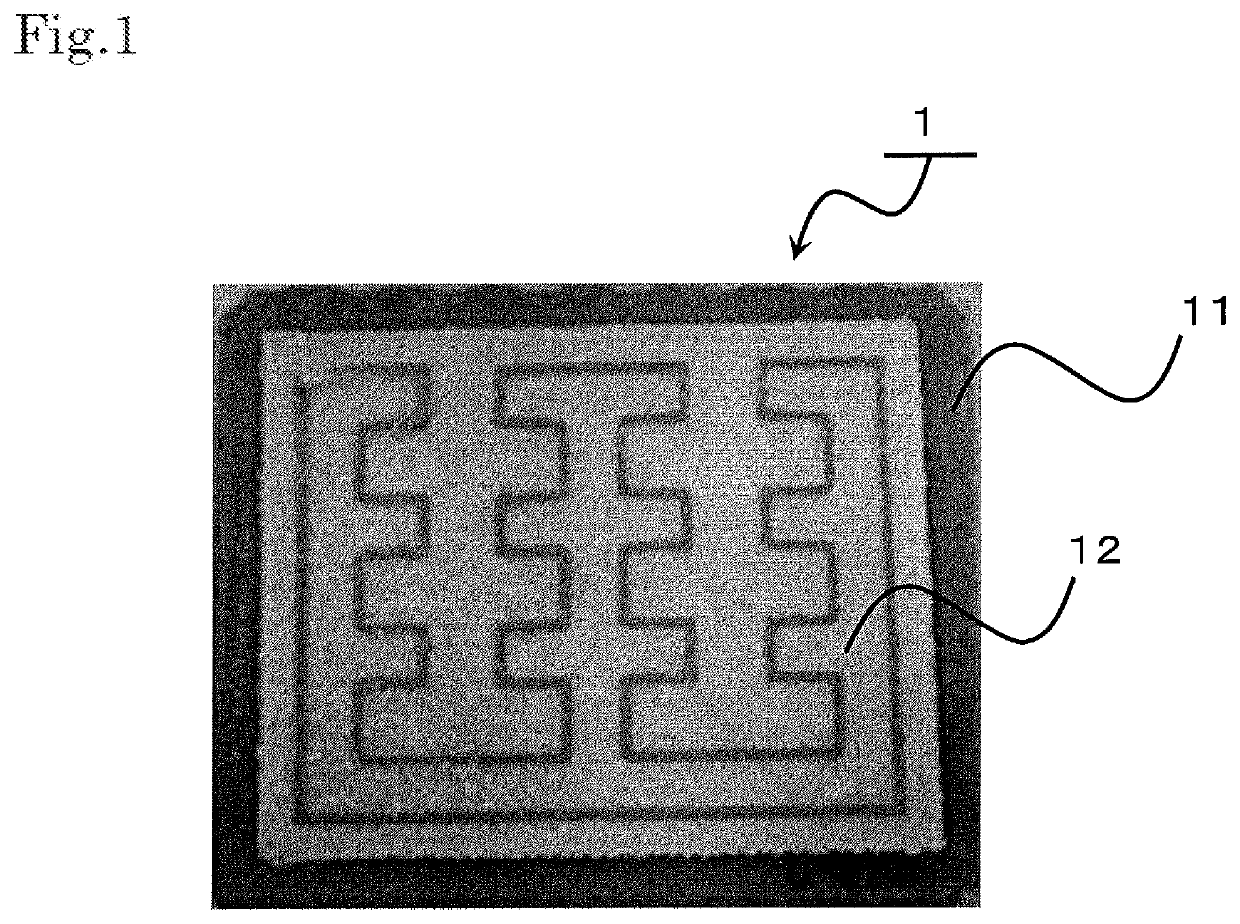Soluble material for three-dimensional molding
a three-dimensional object and soluble material technology, applied in the field of three-dimensional modeling soluble materials, can solve the problems of large dangers of strong alkali solutions, large load on the environment, and eroded three-dimensional objects in the precursor of three-dimensional objects, and achieve the effects of reducing the risk of aqueous alkali and reducing the risk of people and the environment, and reducing the use of polyester resins
- Summary
- Abstract
- Description
- Claims
- Application Information
AI Technical Summary
Benefits of technology
Problems solved by technology
Method used
Image
Examples
synthesis example 1
[0163]4.09 kg of 2,6-naphthalene dimethylcarbonate (manufactured by BP p.l.c.), 3.20 kg of ethylene glycol (special grade, manufactured by Wako Pure Chemical Corporation), 1.69 kg of sodium dimethyl 5-sulfoisophthalate (manufactured by Takemoto Oil & Fat Co., Ltd.), 1.71 kg of titanium tetrabutoxide (first grade, manufactured by Tokyo Chemcial Industry Co., Ltd.), and 42.0 g of sodium acetate trihydrate (special grade, manufactured by Wako Pure Chemical Corporation) were prepared in a 100-liter stainless steel reactor (equipped with a stirrer and a nitrogen introducing tube). The temperature was increased from a room temperature up to 230° C. by taking 1.5 hours at a normal pressure under a nitrogen atmosphere. The mixture was heated at 230° C. for 360 minutes to perform a transesterification. 637 mg of 85% phosphoric acid (special grade, manufactured by Sigma-Aldrich Japan) was added to the mixture and the mixture was stirred for 10 minutes. While stirring, the temperature was incr...
synthesis example 2
[0164]The synthesis example 2 was performed in the same way as the synthesis example 1 except that the amount of sodium acetate trihydrate was changed to 74.1 g to obtain a polyester resin 2.
[Composition of Thermoplastic Resin]
[0165]A proton NMR measurement can be performed using MR400 (NMR manufactured by Agilent Technologies, Inc.) to obtain the compositions of the polyester resin 1.
[Amount of Hydrophilic Group in Thermoplastic Resin]
[0166]The amount (unit: mmol / g) of the hydrophilic group (S03) in the polyester resin 1 can be obtained from the composition of the polyester resin 1 measured with the above-described method.
[Weight Average Molecular Weight]
[0167]10 mg of each of the polyester resin 1 was dissolved into 3 g of HFIP (1,1,1,3,3,3-hexafluoro-2-propanol, manufactured by Wako Pure Chemical Corporation) for 8 hours and the weight average molecular weight was measured by a gel permeation chromatography (GPC). The weight average molecular weight of the polyester resin 1 was p...
example 2
[Preparation of Soluble Material for Three-Dimensional Modeling]
[0178]The following were dried at 60° C. under reduced pressure: 81.6 g of the polyester resin 1 obtained in Synthesis Example 1, 10.2 g of KURARITY LA2250 (Kuraray Co., Ltd.: thermoplastic elastomer: triblock copolymer of polymethyl methacrylate-polybutyl acrylate-polymethyl methacrylate), 4.1 g of Bondfast (registered trade name) 7B (manufactured by SUMITOMO CHEMICAL COMPANY, LIMITED: copolymer of ethylene-vinyl acetate-glycidyl methacrylate) as a compatibilizer, and 4.1 g of ELECUT S-418 (manufactured by TAKEMOTO OIL & FAT Co., Ltd.: organic salt: tetrabutylphosphonium dodecylbenzenesulfonate). Then, a melt kneader (manufactured by Toyo Seiki Seisaku-sho, Ltd.: Labo Plastmill 4C150) was used to melt and knead these components at 230° C. and 90 r / min for 10 minutes to give a white mixture as a soluble material for three-dimensional modeling 2.
[Manufacturing of Filament]
[0179]The manufacturing of a filament was perform...
PUM
| Property | Measurement | Unit |
|---|---|---|
| mass ratio | aaaaa | aaaaa |
| mass ratio | aaaaa | aaaaa |
| pH | aaaaa | aaaaa |
Abstract
Description
Claims
Application Information
 Login to View More
Login to View More - R&D
- Intellectual Property
- Life Sciences
- Materials
- Tech Scout
- Unparalleled Data Quality
- Higher Quality Content
- 60% Fewer Hallucinations
Browse by: Latest US Patents, China's latest patents, Technical Efficacy Thesaurus, Application Domain, Technology Topic, Popular Technical Reports.
© 2025 PatSnap. All rights reserved.Legal|Privacy policy|Modern Slavery Act Transparency Statement|Sitemap|About US| Contact US: help@patsnap.com



